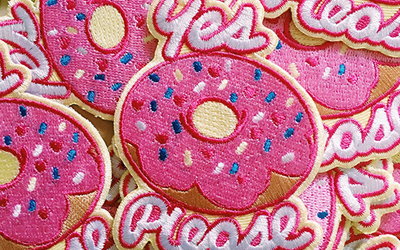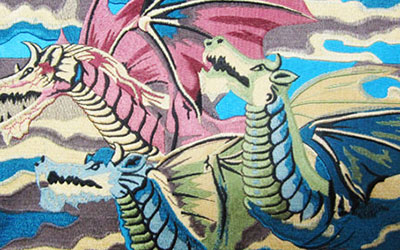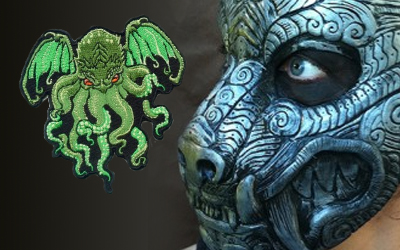This edition of hand-picked was chosen by Jon from our art department. Jon chose the patch and pin set for Shamanic Harmonics, which he had the pleasure of working on. These are known around our office as the “Mad Hatter patches” for obvious reasons. How did these awesome patches come to be?
As always, it starts with artwork.
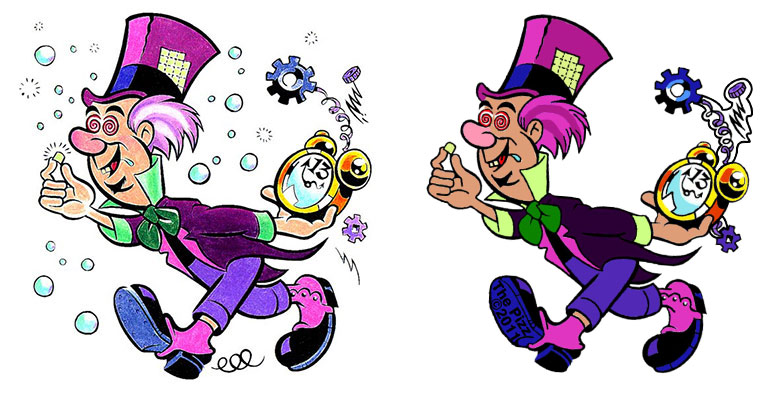
Above you can see the customer's original artwork and our final artwork that was sent to production. The customer wanted a couple tweaks: more gears shown and more thread colors than the free ten we offer for patches. To make this design appropriate for a cut-to-shape patch, the bubbles had to be removed and the design had to be simplified.
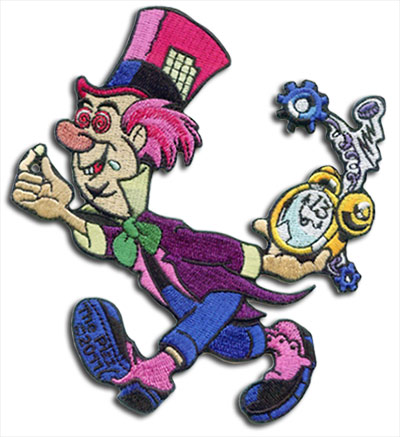
To the left is the final patch. Seeing as our customers often have myriads of questions about the patch design process, Jon has three key takeaways about this patch.
- If you are going to use a copyrighted image, you must have written consent from the original artist or company that owns the image
- Die-cut borders can be cut to any shape and the border can be any thickness
- Simplified artwork is almost always best. The smaller a patch, the simpler it has to be for the final product to look clean.
What about the pin?
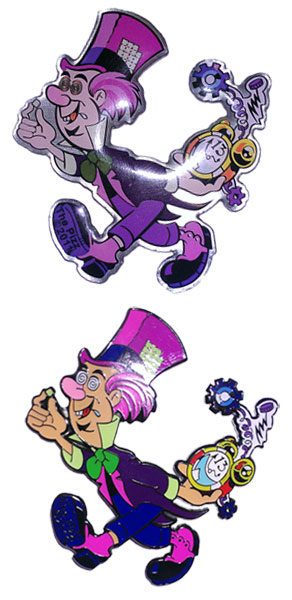
Depending on the process you choose, the amount of colors will vary. Silk-screened pins allow for unlimited color, because the design itself is printed onto the pin, which is overlayed with an epoxy dome for protection and a glossy look. Silk-screening also allows for more detailed designs. In the instance of the Mad Hatter, the customer wanted the same detail from the patches to translate to the pins, and therefore chose the silk-screen process.
As can be seen in the top pin image, the epoxy dome has a glossy finish to it and gives the silver areas an extra shine. The customer wasn't entirely happy with the look of the silk-screened pin, and decided upon a different pin process.
This time around a soft enamel process was used, which involves a mold being etched out of the design and the colors painted on. Usually we ask that the design have four or fewer colors seeing as production has to hand paint these pins. For the Mad Hatter pins, though, the customer was willing to pay extra to get all the colors needed to match the patch. The bottom example is the result of the soft enamel pins.
The customer loved this version and hit the “proceed” button with a smile on his face.
Jon's Key Take-Aways About Pin Design
- Designs need to be simple if not being silk-screened
- Colors should be four or fewer without incurring an extra charge
- Special paints such as glow-in-the-dark can be used on pins
- Soft enamel pins will cause colors to appear more vibrant
These were just two examples of the kinds of pins we offer. You can get the whole run-down on pins here. If you are still confused, you can always call us up and a sales representative will be happy to guide you.

